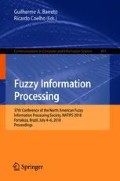Abstract
At present, there exist several automatic tools that, given a software, find locations of possible defects. A general tool does not take into account a specificity of a given program. As a result, while many defects discovered by this tool can be truly harmful, many uncovered alleged defects are, for this particular software, reasonably (or even fully) harmless. A natural reaction is to repair all the alleged defects, but the problem is that every time we correct a program, we risk introducing new faults. From this viewpoint, it is desirable to be able to gauge the repair risk. This will help use decide which part of the repaired code is most likely to fail and thus, needs the most testing, and even whether repairing a probably harmless defect is worth an effort at all – if as a result, we increase the probability of a program malfunction. In this paper, we analyze how repair risk can be gauged.
Access this chapter
Tax calculation will be finalised at checkout
Purchases are for personal use only
References
Almossawi, A., Lim, K., Sinha, T.: Analysis tool evaluation: coverity prevent. Final report, Carnegie Mellon University, Pittsubrgh, Pannsylvania (2006). http://www.cs.cmu.edu/~aldrich/courses/654-sp09/tools/cure-coverity-06.pdf
Belohlavek, R., Dauben, J.W., Klir, G.J.: Fuzzy Logic and Mathematics: A Historical Perspective. Oxford University Press, New York (2017)
Emanuelsson, P., Nilsson, U.: A comparative study of industrial static analysis tools. Electron. Notes Theor. Comput. Sci. 217, 5–21 (2008)
Klir, G., Yuan, B.: Fuzzy Sets and Fuzzy Logic. Prentice Hall, Upper Saddle River (1995)
Mendel, J.M.: Uncertain Rule-Based Fuzzy Systems. Springer, Cham (2017). https://doi.org/10.1007/978-3-319-51370-6
Nguyen, H.T., Kreinovich, V., Wojciechowski, P.: Strict Archimedean t-norms and t-conorms as universal approximators. Int. J. Approx. Reason. 18(3–4), 239–249 (1998)
Nguyen, H.T., Walker, E.A.: A First Course in Fuzzy Logic. Chapman and Hall/CRC, Boca Raton (2006)
Novák, V., Perfilieva, I., Močkoř, J.: Mathematical Principles of Fuzzy Logic. Kluwer, Boston, Dordrecht (1999)
Zadeh, L.A.: Fuzzy sets. Inf. Control 8, 338–353 (1965)
Acknowledgments
This work was supported in part by the US National Science Foundation grant HRD-1242122.
Author information
Authors and Affiliations
Corresponding author
Editor information
Editors and Affiliations
Rights and permissions
Copyright information
© 2018 Springer International Publishing AG, part of Springer Nature
About this paper
Cite this paper
Zapata, F., Kreinovich, V. (2018). How to Gauge Repair Risk?. In: Barreto, G., Coelho, R. (eds) Fuzzy Information Processing. NAFIPS 2018. Communications in Computer and Information Science, vol 831. Springer, Cham. https://doi.org/10.1007/978-3-319-95312-0_48
Download citation
DOI: https://doi.org/10.1007/978-3-319-95312-0_48
Published:
Publisher Name: Springer, Cham
Print ISBN: 978-3-319-95311-3
Online ISBN: 978-3-319-95312-0
eBook Packages: Computer ScienceComputer Science (R0)

